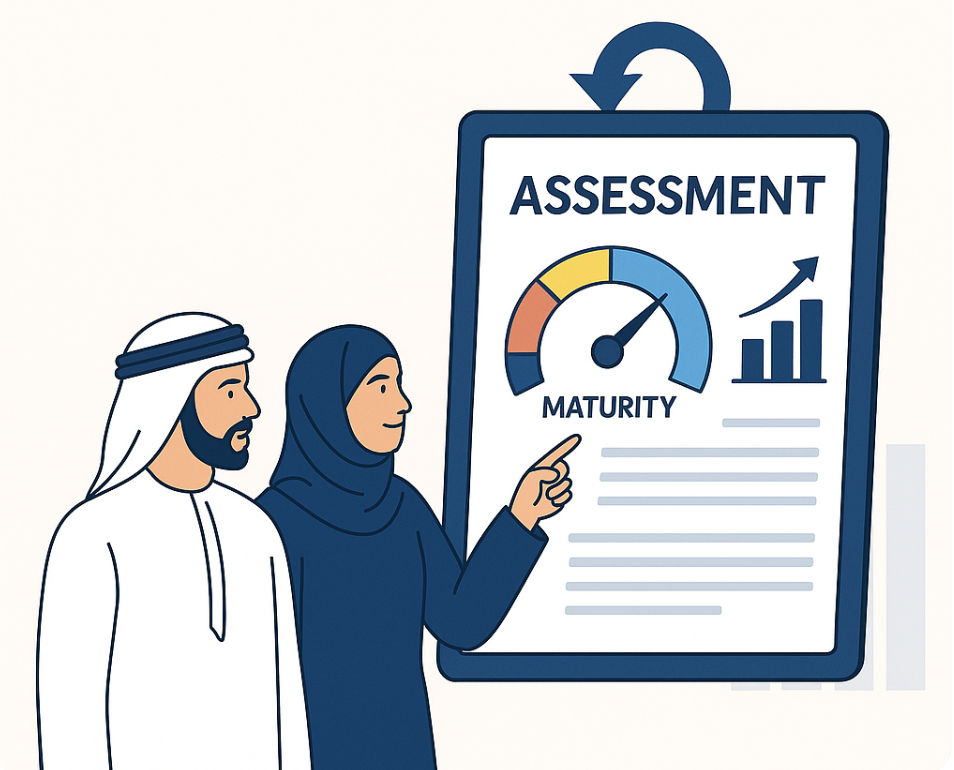Many of us have been in organisations where we are in the middle of a project or even a task and something else lands on our desk which, at that moment, is deemed more important than whatever we were working on. This scenario is common and reflects a significant challenge in managing priorities and workloads. When this happens, we inevitably refocus on the new project, potentially causing an entire team to stop what they are doing, leaving their current work partly finished and of no value to the organisation.
When we start working on the new project or task, we might make progress until the original project's stakeholders begin demanding updates and questioning why it is delayed. The team then reactively shifts their focus back to the original project, only to find that they need to reorient themselves once again, losing valuable time and mental energy in the process. This cycle continues, potentially with two, three, or more projects all spinning simultaneously.
This constant shift of focus is known as context switching, a concept frequently discussed in cognitive psychology and productivity studies. Context switching occurs when an individual or team frequently alternates between different tasks or projects. Each switch incurs a cognitive cost, as our brains need time to adjust to the new context, recall where we left off, and re-establish the flow of work. Research indicates that it can take several minutes to regain full concentration after a switch, leading to a notable decrease in overall productivity. Context switching between several tasks and projects in the same day can lead to significant waste. These are the days when you look back and think “I have been really busy today but don’t seem to have achieved anything”.
The History of Multitasking and Why It Happens
The concept of multitasking originated from the computing world, where it refers to a computer's ability to run multiple processes simultaneously. This idea was then applied to human tasks, suggesting that people could increase their productivity by handling several activities at once. Over time, multitasking became synonymous with efficiency and capability, particularly in fast-paced work environments.
In modern workplaces, multitasking often happens due to several reasons:
1. High Expectations and Workload: Organisations frequently expect employees to handle numerous responsibilities simultaneously, driven by the desire to maximise productivity and meet tight deadlines.
2. Technological Advances: The advent of digital communication tools such as email, instant messaging, and project management software enables constant connectivity and quick task switching.
3. Cultural Norms: In many corporate cultures, the ability to multitask is often seen as a valuable skill and a sign of dedication and hard work.
4. Stakeholder Demands: Different stakeholders may have conflicting priorities, pushing teams to juggle multiple projects to keep everyone satisfied.
5. Lack of Clear Priorities: When organisations do not clearly define and communicate priorities, employees may feel pressured to address everything at once to avoid missing critical tasks.
However, extensive research has shown that human multitasking is largely a myth. Unlike computers, the human brain is not designed to focus on multiple tasks simultaneously. Instead, what we perceive as multitasking is actually rapid task switching, which can significantly reduce efficiency and increase errors.
The concept of context switching highlights the inefficiencies and hidden costs of this work pattern. Each time we switch tasks, we lose momentum and incur a 'switching cost'—time spent reorienting, regaining focus, and remembering details. Studies suggest that even brief mental blocks created by shifting between tasks can cost as much as 40% of someone's productive time.
One natural reaction from the team is to label everything as 'In Progress,' an attempt to please all stakeholders simultaneously. However, this is a false economy, as it gives the illusion of progress while, in reality, it increases the overall time taken to complete each task due to the frequent switching. The real cost of trying to keep all these plates spinning is a substantial reduction in productivity and efficiency, increased stress, and often a decrease in the quality of work produced.
The image below shows the impact of trying to switch between three projects and focusing on one at a time. Often counterintuitive to many people, but focusing on one project at a time delivers, all three projects sooner than any individual project, with Project A and B being delivered significantly earlier than they would be in the multi-tasking model.

You can substitute the dates with hours, or months depending on the timeframe of the work, and the same principle applies. This diagram does not fully factor in the actual context switching waste in the first diagram, which would be in the region of 60% of the time, significantly pushing out the timelines of the entire project.
Moreover, frequent context switching can significantly impact team morale. When team members are constantly pulled in different directions and unable to see tasks through to completion, it can lead to frustration, burnout, and a sense of inefficacy. On the other hand, maintaining focus on a single project or task until it is completed can lead to higher job satisfaction, a greater sense of achievement, and improved team cohesion. Completing tasks allows team members to experience the satisfaction of a job well done, which is crucial for maintaining high morale and motivation.
To mitigate the negative effects of context switching, it is crucial to establish clear priorities and allow team members to focus on completing tasks without frequent interruptions. Implementing strategies such as time-blocking, where specific periods are dedicated to particular projects, and minimising unnecessary meetings or check-ins can help maintain focus and improve overall productivity.
Furthermore, managing Work In Progress (WIP) is essential in reducing context switching and enhancing efficiency. WIP refers to the number of tasks or projects a team is working on at any given time. Limiting WIP can help teams concentrate on completing tasks before taking on new ones, thus reducing the cognitive load and improving overall performance.
Agile Frameworks such as Scrum and Kanban offer structured approaches to managing WIP and minimising context switching. Scrum, an agile framework, promotes time-boxed iterations called sprints, where teams commit to completing a specific set of tasks within a fixed period. This focus on a limited number of tasks helps reduce context switching and enhances productivity. Regular sprint reviews and retrospectives allow teams to reflect on their progress and make necessary adjustments.
Kanban, another agile framework, visualises work through a board with columns representing different stages of the workflow. By setting WIP limits for each column, Kanban ensures that teams do not take on more work than they can handle at any one time. This approach helps maintain a steady flow of work, reduces bottlenecks, and minimises the need for context switching.
Kanban's emphasis on visualising work, limiting WIP, and managing flow makes it a powerful tool for enhancing productivity. The Kanban board, typically divided into columns such as 'To Do,' 'In Progress,' and 'Done,' provides a clear visual representation of the status of tasks. Teams can quickly see where work is piling up and identify bottlenecks, allowing them to take corrective action promptly. By limiting the number of tasks in the 'In Progress' column, teams can ensure that they focus on completing existing tasks before starting new ones, thus reducing the cognitive load and improving efficiency.
Kanban also promotes continuous improvement through regular review meetings, where teams discuss what is working well and what can be improved. This iterative process helps teams adapt to changing priorities and continuously refine their workflow, ensuring that they remain productive and responsive to stakeholder needs.
Both Scrum and Kanban emphasise continuous improvement and adaptability, allowing teams to respond to changing priorities without falling into the trap of constant context switching. By incorporating these techniques and focusing on managing WIP, organisations can enhance their productivity, reduce stress, and deliver higher quality results.
Case Studies:
1. Spotify: Spotify implemented a customised version of Scrum and Kanban to manage their rapid growth and complex project demands. By using Scrum for feature development and Kanban for operational tasks, Spotify successfully reduced context switching and improved overall efficiency. This hybrid approach allowed them to manage multiple projects effectively while keeping stakeholders informed and satisfied.
- Source: Kniberg, H., & Ivarsson, A. (2012). *Scaling Agile @ Spotify with Tribes, Squads, Chapters & Guilds*. [InfoQ](https://www.infoq.com/articles/agile-at-spotify/).
2. Microsoft: Microsoft used Kanban to streamline their IT operations. By visualising work and setting WIP limits, they were able to identify bottlenecks and reduce cycle times. This approach led to significant improvements in service delivery and team productivity, showcasing the effectiveness of Kanban in managing multiple ongoing projects.
- Source: Anderson, D. J. (2010). *Kanban: Successful Evolutionary Change for Your Technology Business*. Blue Hole Press.
3. Toyota: The origin of Kanban can be traced back to Toyota, where it was developed as part of the Toyota Production System (TPS). By using Kanban to manage production processes, Toyota achieved remarkable efficiency and quality improvements. The principles of visualising work, limiting WIP, and continuous improvement allowed Toyota to manage multiple production lines effectively.
- Source: Liker, J. K. (2004). *The Toyota Way: 14 Management Principles from the World's Greatest Manufacturer*. McGraw-Hill.
So how do we manage multiple projects effectively and keep all stakeholders happy?
To manage multiple projects effectively and keep all stakeholders happy, it is essential to:
1. Set Clear Priorities: Establish clear priorities based on organisational goals and communicate them to the team and stakeholders.
2. Limit Work In Progress (WIP): Use methodologies like Kanban to set WIP limits and ensure teams focus on completing tasks before taking on new ones.
3. Visualise Work: Implement a Kanban board to provide a visual representation of tasks and their status, helping teams identify bottlenecks and manage flow.
4. Time-Block Work: Allocate specific periods for particular projects to maintain focus and minimise interruptions.
5. Conduct Regular Reviews: Hold regular sprint reviews and retrospectives (in Scrum) or review meetings (in Kanban) to reflect on progress and make necessary adjustments.
6. Promote Continuous Improvement: Encourage a culture of continuous improvement where teams can adapt to changing priorities and refine their workflow.
7. Communicate Transparently: Maintain open and transparent communication with stakeholders to manage expectations and provide regular updates on progress.
8. Foster Team Morale: Create an environment where team members can focus on completing tasks without frequent context switching. This will enhance their sense of achievement, job satisfaction, and overall morale.
By following these strategies, organisations can reduce the negative impact of context switching, manage multiple projects more effectively, and ensure that all stakeholders remain informed and satisfied. Maintaining focus and avoiding multitasking not only enhances productivity but also boosts
If you are looking for support with managing multiple projects using Agile Principles and frameworks to help support the challenge, Agility Arabia can help.
For more information and resources, visit Agility Arabia or get in touch here for a Free 30 minute consultation.




